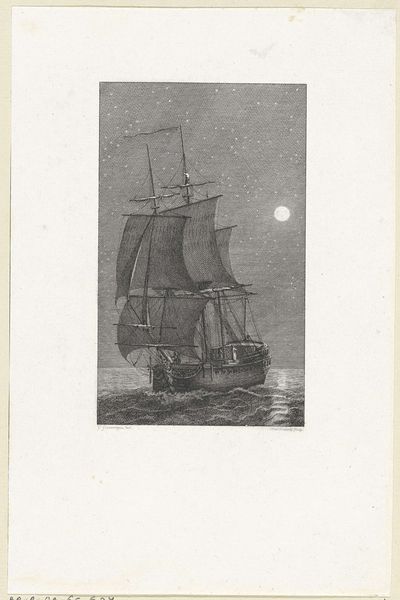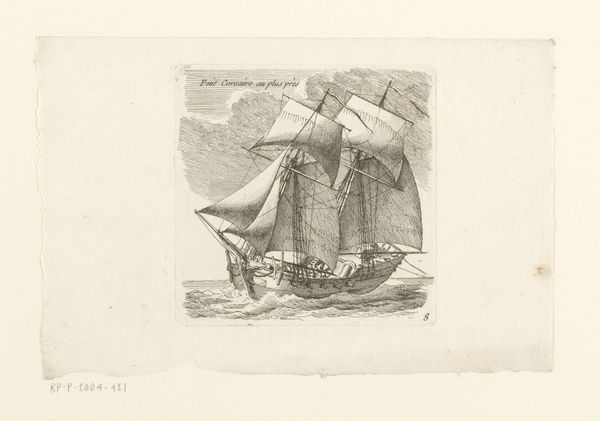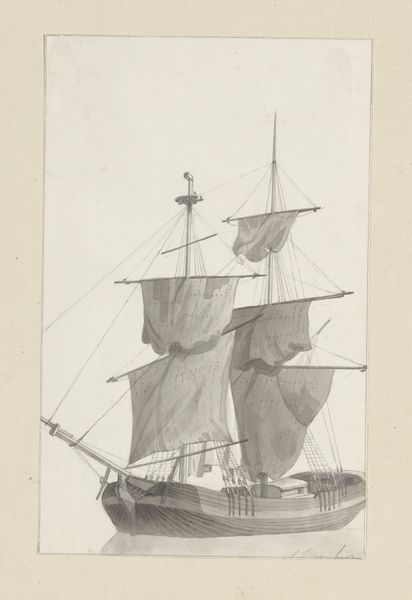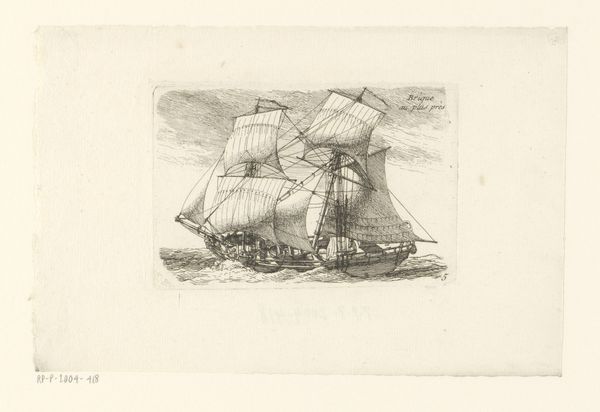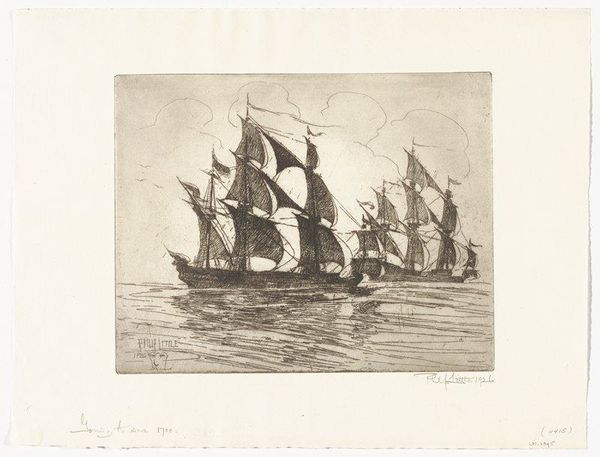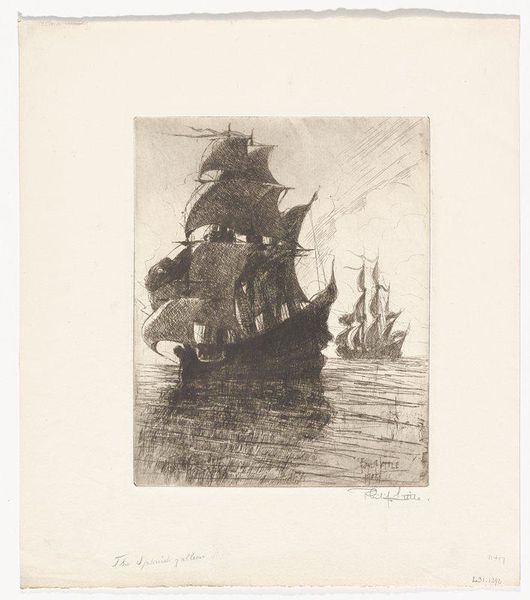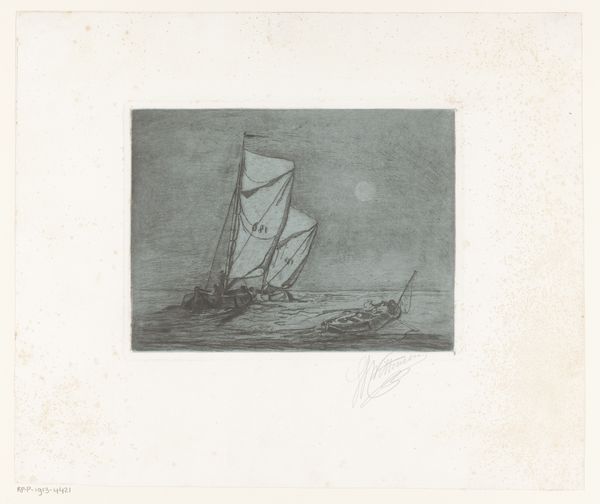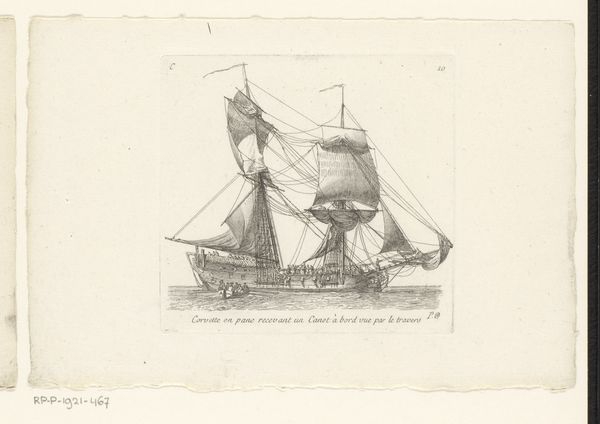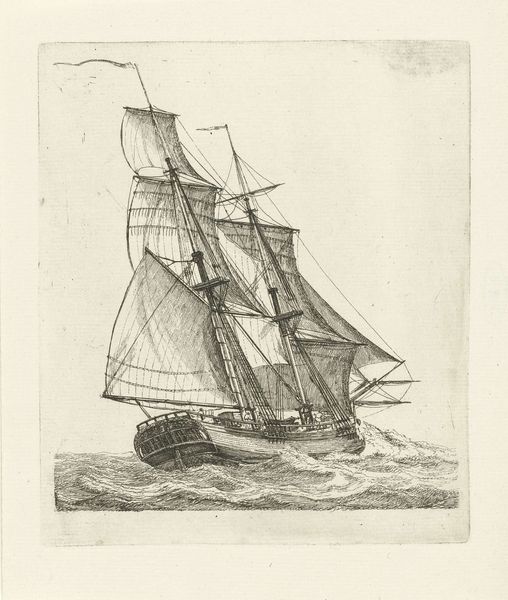
print, etching
# print
#
etching
#
landscape
#
form
#
line
#
realism
Dimensions: 5 15/16 x 4 7/8 in. (15.08 x 12.38 cm) (plate)10 3/16 x 9 1/16 in. (25.88 x 23.02 cm) (sheet)
Copyright: No Copyright - United States
Curator: There’s an evocative quality to Philip Little's etching, "Before the Wind," created in 1927. Editor: Yes, the ship seems to be surging forward, the etched lines giving it movement. There’s a palpable tension in those sails. Curator: As a print, this artwork intrigues me, the matrix used to make this piece undoubtedly dictated much of the mark-making we observe, especially with those strong areas of contrasting dark and light, common within prints. The use of the etching technique adds another layer. Think about the process, the time taken to etch, and the materials chosen! Editor: Well, the context is important here, too. Consider the history of maritime trade, its importance during the 1920s, but also Little's personal narrative. I would research into his background, what other political influences and what stories would it convey to contemporary audiences familiar with the legacies and the culture of travel. Curator: Right, by engaging the viewer, Philip Little highlights that even a mass produced object like an etching still carries individual details of labor and materials. There are subtle imperfections of printing process to admire that adds character. Editor: But also accessibility. The production of multiples is fascinating—more people could own an image of a sailing ship than could afford to commission a painting or perhaps even travel on one themselves. This really broadened representation of the open sea. Curator: Indeed, and by considering the choices made, from paper stock to etching plate, we gain a deeper understanding of how artists negotiate the material world to give the viewers accessibility into different representations and art appreciation. Editor: This brings up considerations around visibility. How the very act of representation could inform a broader, shared understanding of maritime history. I do admire how "Before the Wind" exists as both an aesthetic object and an accessible form of imagery with historical, social impact to engage us. Curator: The history intertwined with the art materials certainly makes "Before the Wind" an enduring work of social and historical artistic skill. Editor: And the context definitely influences my appreciation.
Comments
No comments
Be the first to comment and join the conversation on the ultimate creative platform.
